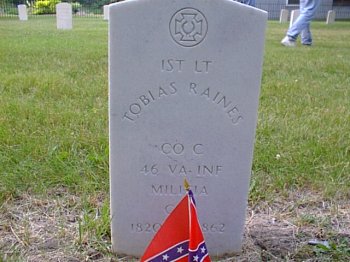At the very tip of the state of Ohio, there is a beautiful, shady causeway that crosses the waters of Lake Erie onto a small island. Today, this island is filled with beautiful homes and smiling people. In 1862, this was the site of a stockade which housed Confederate Prisioners of War. Mostly officers, with an occasional enlisted man.

The construction on the prison took only 30 days and in April of 1862, the first 200 prisioners arrived, by train, from Camp Chase.

The prison's stockade was a four-sided area of approximately 16 acres with a 15 foot high wooden fence surrounding it. At the base of the fence was a ditch to prevent tunneling, since the ditch reached bare limestone. Inside the stockade were 13 two-story prisoner barracks or "blocks", each roughly 25 by 125 feet. Twelve blocks were barracks and the thirteenth was the hospital. There was a yard down the center and behind each block was a sink or privy which was always foul due to poor drainage of the soil over the limestone shelf.

The graves are marked with as much information as was available. Some have names and the soldier's home state. Others have simply "unknown"... which is sad.
The hastily built blocks were constructed of green lumber which quickly shrank as it cured leaving many gaps. Prisoners knocked out knots and cut additional holes for ventilation. The refreshing lake breezes so valued in summer became brutal as th bay froze in winter and a layer of insulating newspaper was used to ease the numbing cold.

Prisoners could receive packages and mail. The mail was inspected and the parcels were searched and often damaged or depleted before the prisoner received them. Consequently prisoners often relied on the sutler store to buy sewing supplies, ink, stationary, clothes, food, combs, toothbrushes, etc. These items could be purchased until late in the war when food, along with other items were no longer permitted. The prisoners on Johnsonís Island, along with most of the soldiers that fought in the Civil War endured harsh winters, food and fuel shortages, disease, along with the mental anguish of uncertainty about their families and their own futures. Current research suggests that well over 300 men died on Johnsonís Island during the war.


The graveyard is beautiful and seemingly well maintained. The grass was neatly cut. There was even scattering of flowers around on some of the graves. The area was shady and cool....very quite.
Next Page
